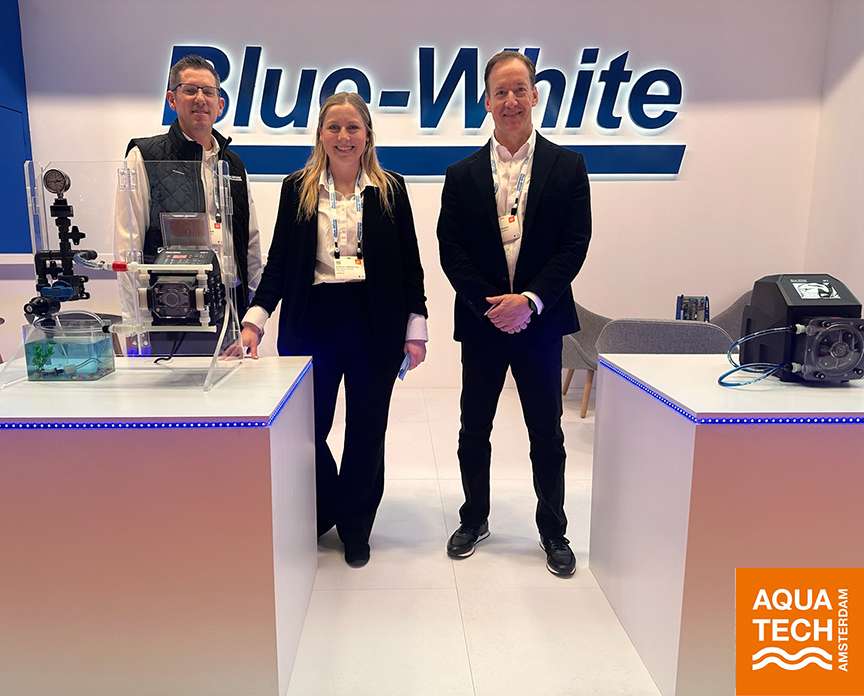
Visit BW® at Aquatech Amsterdam for Expert Chemical Dosing Solutions
Team Blue-White® is at Aquatech Amsterdam and ready to discuss the Best
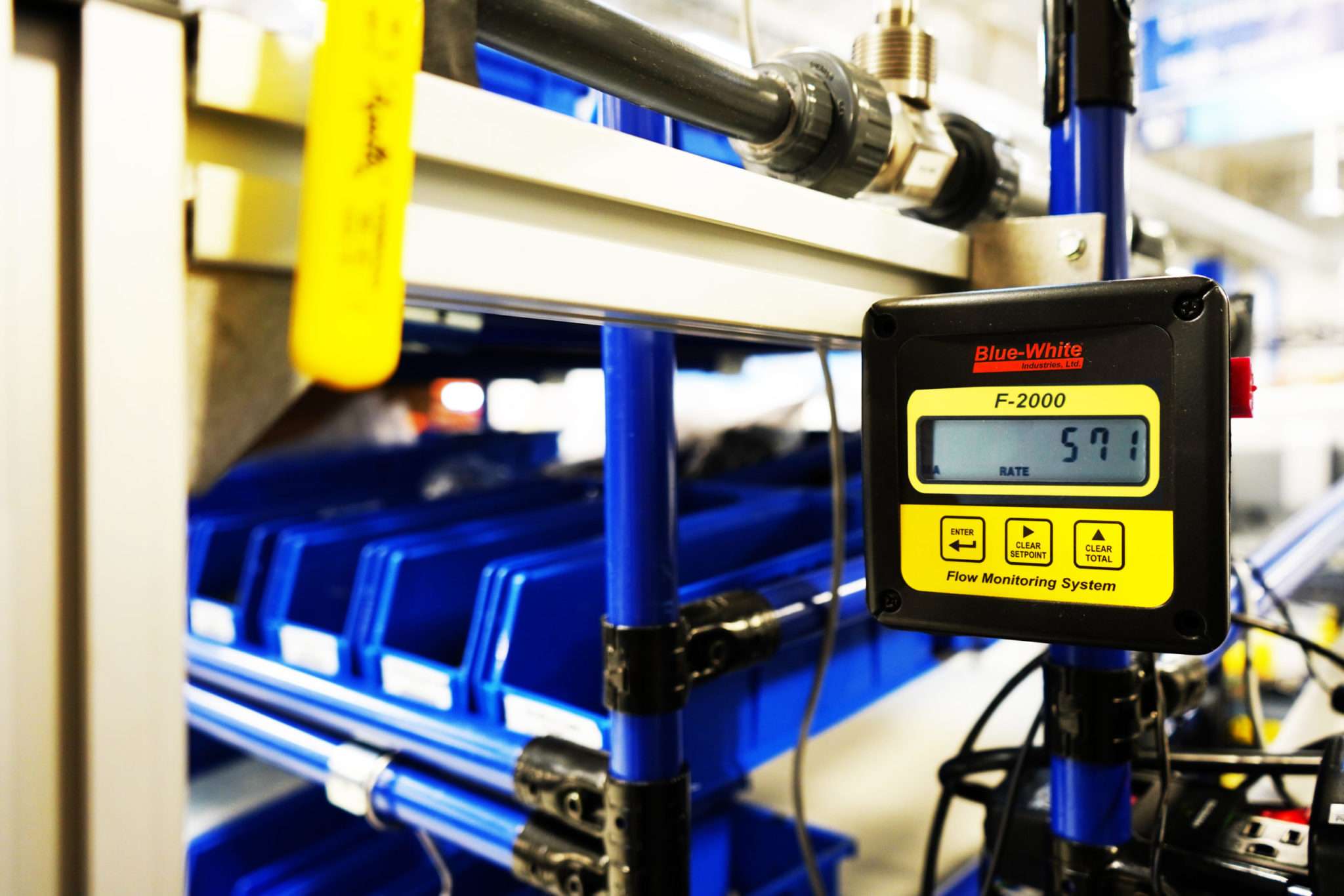
A device used to measure the flow rate of a fluid in a system. It incorporates a rotating paddlewheel that spins as the fluid passes through.
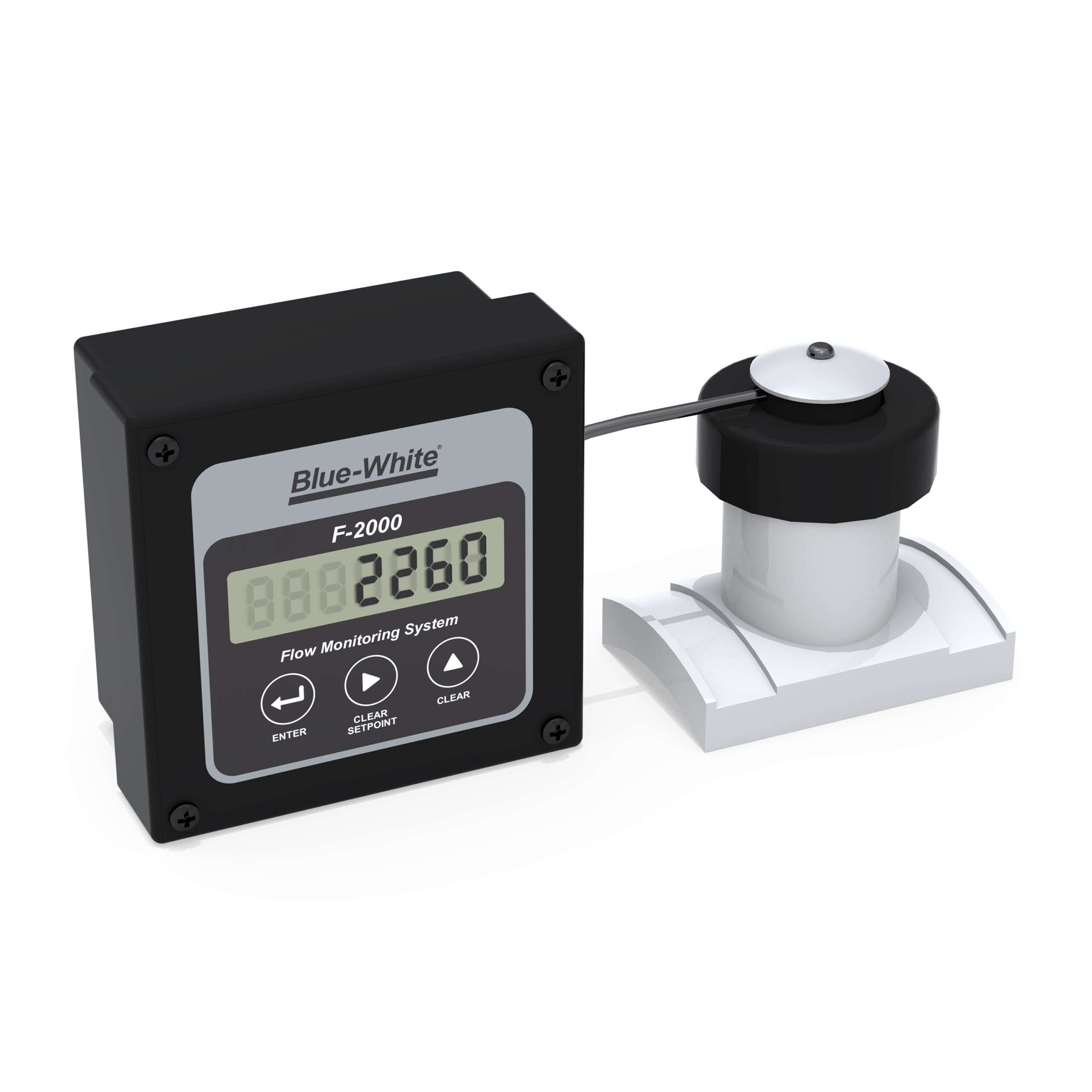
Relatively low-cost paddlewheel-style electronic flow meters are proof that high cost doesn’t always mean better value.
Electronic flow meters used to control metering pumps and other industrial water treatment system components, can be very costly. While many of these meters are extremely accurate and offer a variety of features, these features are often underutilized and overqualified for the application.
The components of a system must be able to perform the required task – get the job done – and meet the other physical requirements of the application. Excess capability, features, and accuracy are a waste of money. You will get the most value for your money by purchasing system components that meet the demands of the system without being overkill. While expensive, high technology solutions may be available for your application; low-cost paddlewheel flow meters offer high accuracy solutions (to +/- 1% of the full-scale reading) for many industrial water treatment applications.
Paddlewheel flow meters are easy to install and operate, resulting in a very low overall cost of ownership.
Paddlewheel flow meters can control inexpensive metering pumps.
Chemical metering pumps are used to inject chemicals such as chlorine and acids into water systems, and the chemical must be injected into the system at the proper rate to achieve the correct water/chemical proportions. In a system that has varying water flow rates, solenoid-driven metering pumps are often used. These pumps can be “pulsed” by an external controller or PLC resulting in intermittent small injections of chemical per volume of water flow.
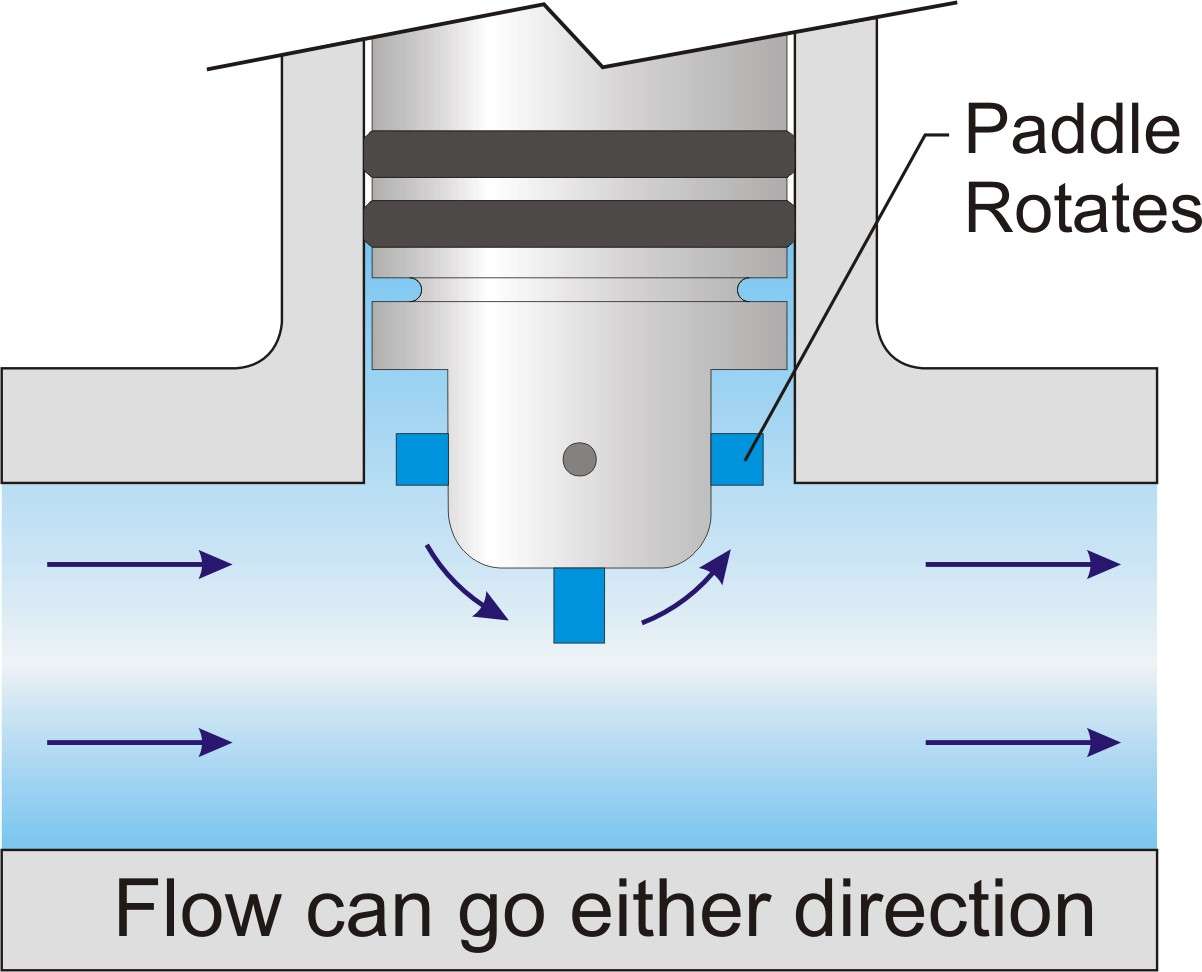
Paddlewheel flow meters can be used to start and stop inexpensive, motor-driven fixed feed rate metering pumps without the need for expensive PLCs or other control equipment. When the meter has determined that a preprogrammed volume of flow has passed through the system, control circuitry in the meter turns on the chemical pump for a pre-programmed amount of time, usually a few seconds, and then back off again. Although this method results in an uneven “pulsed” dispersion of chemical in the system, it is simple to install and results in a highly accurate, easy-to-maintain proportional feed system.
In some applications, uneven chemical injection results in portions of the flow stream that have not been treated with chemical, especially at very low injection rates. If a finer dispersion of chemical is required, variable speed peristaltic (squeeze tube) metering pumps can be used. The new generations of high-pressure peristaltic metering pumps are equipped with variable speed motors resulting in the continuous injection of chemical instead of interrupted “pulsed” chemical injection. These pumps have the ability to pump air eliminating vapor lock and lost prime issues, and they can prime against maximum back pressure. The output remains the same regardless of changes in system pressure. The peristaltic pump’s speed can be controlled directly by a paddlewheel sensor’s high-speed frequency signal. The pump speed is programmed to react to changes in the frequency output by the flow sensor resulting in highly accurate proportional feed even at very low injection rates.
Paddlewheel flow meters can verify that chemical injection has occurred.
Paddlewheel sensors are capable of measuring chemical metering pump output rates as low as One ounce per minute. When installed on the metering pump, the flow sensor can be used to alert the system operator that an error exists in the system. Some metering pumps include electronics that react to the paddlewheel output signal. If the metering pump should fail to inject chemical due to a pump malfunction, clogged fitting, exhausted chemical container, etc., an alarm output is triggered.
Paddlewheel flow meters can monitor a system’s flow rate.
When a system’s flow rate is critical, a paddlewheel flow meter can be used to alert the system operator if the rate increases or decreases out of a programmed range. The electronic display can be programmed with high and low rate parameters which will trigger an alarm output signal if reached. The alarm can automatically reset or latch. Trigger and release values can be set, with hysteresis, which will eliminate “flickering” that can occur when the flow rate is at the alarm value.
Written by:
Blue-White® Industries
714-893-8529

Team Blue-White® is at Aquatech Amsterdam and ready to discuss the Best
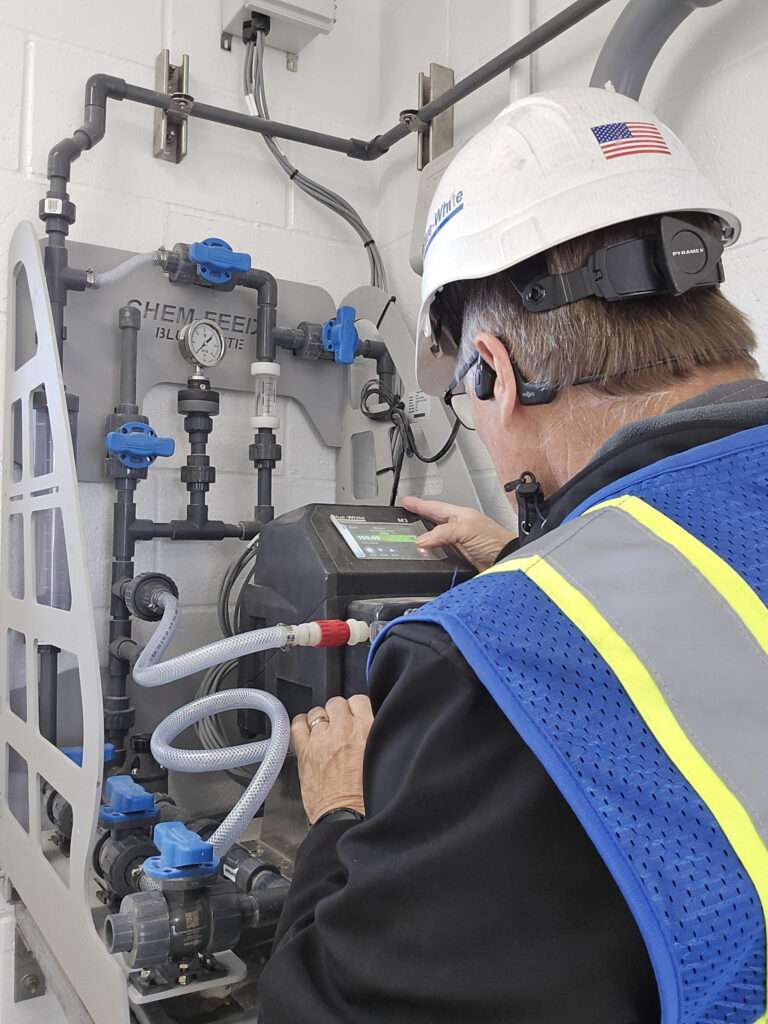
BW®’s Rich Hopkins just completed startup of this wall mount skid, equipped with Blue-White®’s
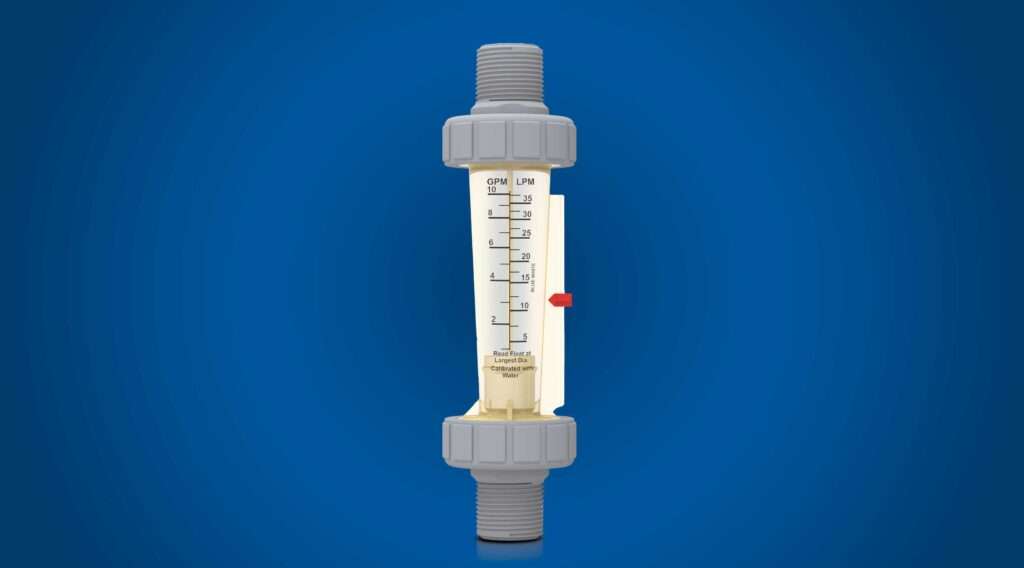
There are many industrial and municipal applications where accurately measuring fluid flow
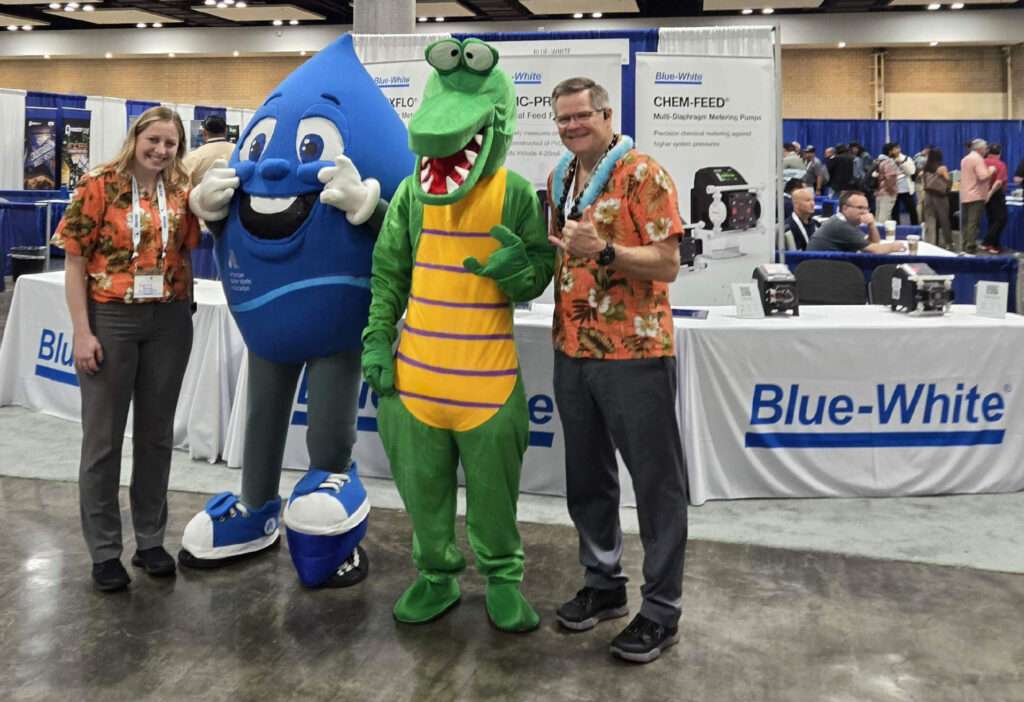
It was a busy few days in Honolulu for the Pacific Water
Copyright © 2024 Blue-White
| Cookie | Duration | Description |
|---|---|---|
| cookielawinfo-checkbox-advertisement | 1 year | Set by the GDPR Cookie Consent plugin, this cookie is used to record the user consent for the cookies in the "Advertisement" category . |
| cookielawinfo-checkbox-analytics | 11 months | This cookie is set by GDPR Cookie Consent plugin. The cookie is used to store the user consent for the cookies in the category "Analytics". |
| cookielawinfo-checkbox-necessary | 11 months | This cookie is set by GDPR Cookie Consent plugin. The cookies is used to store the user consent for the cookies in the category "Necessary". |
| CookieLawInfoConsent | 1 year | Records the default button state of the corresponding category & the status of CCPA. It works only in coordination with the primary cookie. |
| elementor | never | This cookie is used by the website. It allows the website owner to implement or change the website's content in real-time. |
| viewed_cookie_policy | 11 months | The cookie is set by the GDPR Cookie Consent plugin and is used to store whether or not user has consented to the use of cookies. It does not store any personal data. |
| Cookie | Duration | Description |
|---|---|---|
| _ga | 2 years | The _ga cookie, installed by Google Analytics, calculates visitor, session and campaign data and also keeps track of site usage for the site's analytics report. The cookie stores information anonymously and assigns a randomly generated number to recognize unique visitors. |
| _gat_gtag_UA_85334924_1 | 1 minute | Set by Google to distinguish users. |
| _gid | 1 day | Installed by Google Analytics, _gid cookie stores information on how visitors use a website, while also creating an analytics report of the website's performance. Some of the data that are collected include the number of visitors, their source, and the pages they visit anonymously. |
| CONSENT | 2 years | YouTube sets this cookie via embedded youtube-videos and registers anonymous statistical data. |
| Cookie | Duration | Description |
|---|---|---|
| VISITOR_INFO1_LIVE | 5 months 27 days | A cookie set by YouTube to measure bandwidth that determines whether the user gets the new or old player interface. |
| YSC | session | YSC cookie is set by Youtube and is used to track the views of embedded videos on Youtube pages. |
| yt-remote-connected-devices | never | YouTube sets this cookie to store the video preferences of the user using embedded YouTube video. |
| yt-remote-device-id | never | YouTube sets this cookie to store the video preferences of the user using embedded YouTube video. |
Please fill out the form to request a quote.
A sales rep will reach out to you.
| Image | Catalog Number | Description | Price | Buy |
|---|